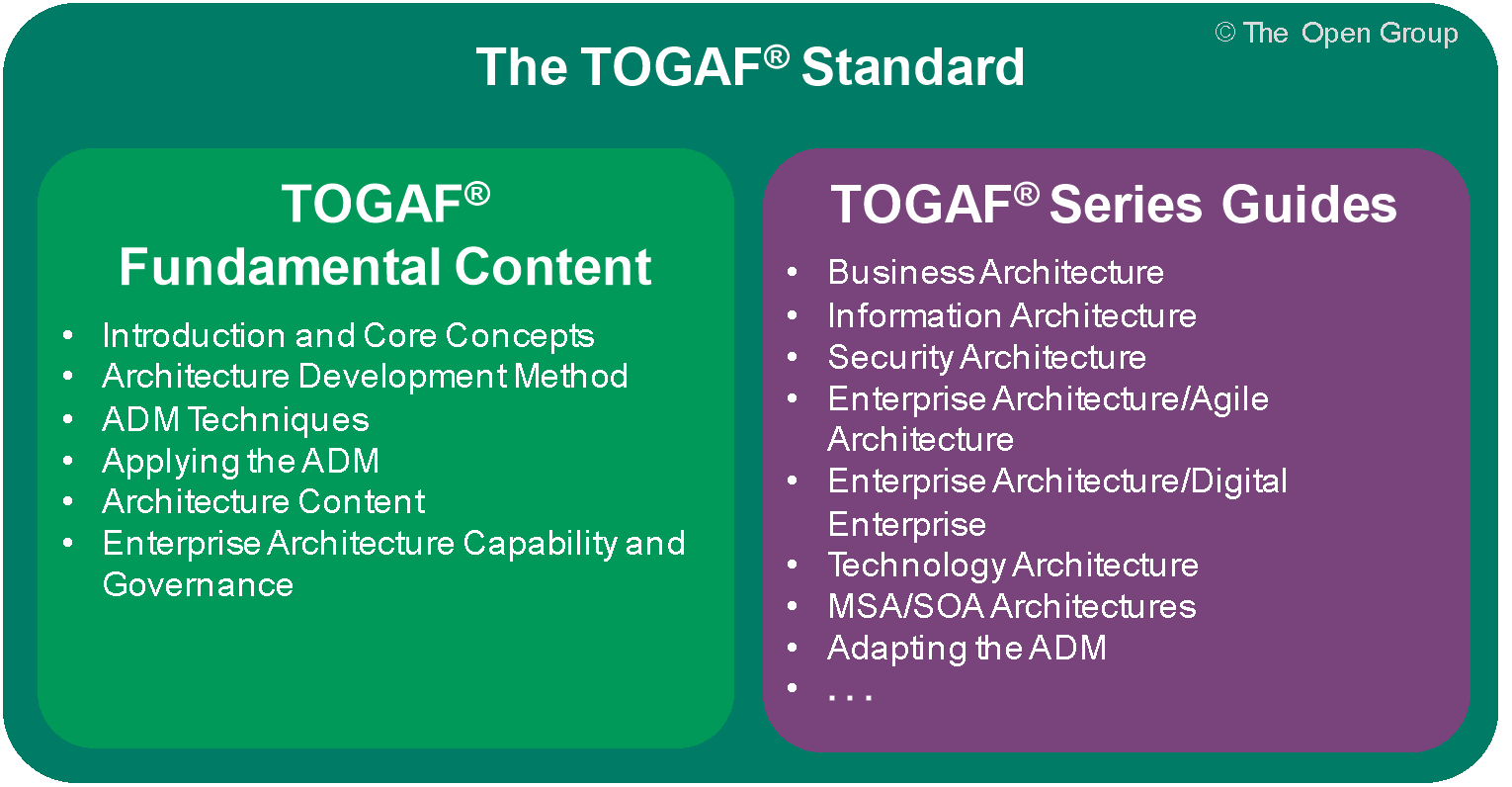Discovering the TOGAF Standard, 10th Edition
Introduction to the TOGAF Standard
Welcome to the transformative world of TOGAF, where Enterprise Architecture (EA) is not merely a practice but a structured approach to guiding organizational change and improvement. The TOGAF Standard, 10th Edition, serves as a comprehensive resource designed to unlock the potential of Enterprise Architecture. Whether you are a seasoned practitioner, a leader of an EA team, or a sponsor overseeing strategic transformation, this guide enhances your understanding and utilization of the TOGAF framework.
Key Components of the TOGAF Standard
1. TOGAF Fundamental Content: Essential Scaffolding
Overview: This core section of TOGAF lays the foundation by providing universal concepts and enduring best practices essential for any EA initiative.
Purpose: It offers stable guidance for developing, maintaining, and utilizing Enterprise Architecture, ensuring that architects have a reliable framework to build upon.
2. TOGAF Series Guides: Customization and Configuration
Overview: Complementing the Fundamental Content, these guides focus on specific topics, delivering proven, stable, and enduring best practices tailored to unique organizational needs.
Purpose: They assist practitioners in configuring the universal concepts according to the specific requirements of their enterprises, promoting a more personalized approach to EA.
The Structure of the TOGAF Documentation Set
Understanding the TOGAF documentation set is crucial for effectively transitioning from universal concepts to unique configurations within your organization.

Universal Concepts to Unique Configurations
Universal Scaffolding: The TOGAF Standard provides a framework that applies to all EA practices, ensuring a common language and structure.
Customization: Organizations utilize the shared scaffolding but configure it uniquely to meet their specific goals, making TOGAF flexible and applicable across various contexts.
Journey from Universal to Unique
- Version Evolution: The TOGAF Standard has evolved to better support both universal and unique content, enhancing its relevance in diverse environments.
- Restructuring: Version 9.2 initiated a restructuring process, allowing specialists to address their specific domains more effectively.
- TOGAF Series Guides: These guides cover topics like Risk, Security, and Business Architecture, offering specialized best practices that enrich the overall framework.
Document Structure
- Modularity: The TOGAF Standard’s document structure is modular, presenting a clear hierarchy from universal concepts to stable best practices and emerging ideas.
- Hierarchy: The structure includes TOGAF Fundamental Content, TOGAF Series Guides, and the TOGAF Library, each providing distinct perspectives on Enterprise Architecture.
- Stability and Expansion: The Fundamental Content is designed to remain stable, while the Series Guides are expected to expand as the body of knowledge grows, offering more comprehensive best practices.
What’s Next?
With the groundwork laid, you are now prepared to embark on your journey with the TOGAF Standard, 10th Edition. Whether you’re configuring your EA team, developing your methods, or documenting your enterprise’s architecture, this standard provides the common concepts, structure, and enduring best practices to guide your efforts.
Summary of Changes (Version 9.2 to 10th Edition)
Before diving deeper, it’s important to highlight the significant changes from Version 9.2 to the TOGAF Standard, 10th Edition:
- Easier Adoption of Best Practices: The 10th Edition simplifies the adoption of best practices, making it more accessible for practitioners and highlighting areas for exploring new ideas.
- Broad Applicability Across Sectors: TOGAF’s versatility extends its use to small, medium, and large organizations across various sectors, including government and defense, making it adaptable to diverse structures and needs.
- Enhanced Guidance for Efficiency: The expanded “how-to” material empowers organizations to operate more effectively, addressing a broad range of use cases, including agile enterprises and digital transformation initiatives.
- Designed for Universal Concepts and Variable Configuration: The framework strikes a balance between common universal concepts and detailed configurations, allowing customization to meet specific enterprise requirements.
- Improved Document Structure: The structure prioritizes architects’ needs, providing clearer, more topical guidance for delivering optimal EA solutions.
Overall, these improvements aim to enhance user experience, promote universal applicability, and provide a more structured and user-friendly approach to adopting and configuring the TOGAF Standard for effective EA practices.
Conclusion
The TOGAF Standard, 10th Edition, is your compass in the dynamic landscape of Enterprise Architecture. With its universal concepts, stable best practices, and room for emerging ideas, TOGAF empowers organizations of all sizes and sectors to tailor their EA practices for success. As you delve into the TOGAF documentation set, remember that your customization is what transforms universal scaffolding into a uniquely configured Enterprise Architecture that aligns with your organization’s needs. Embrace the TOGAF Standard and navigate the complexities of EA with confidence.

